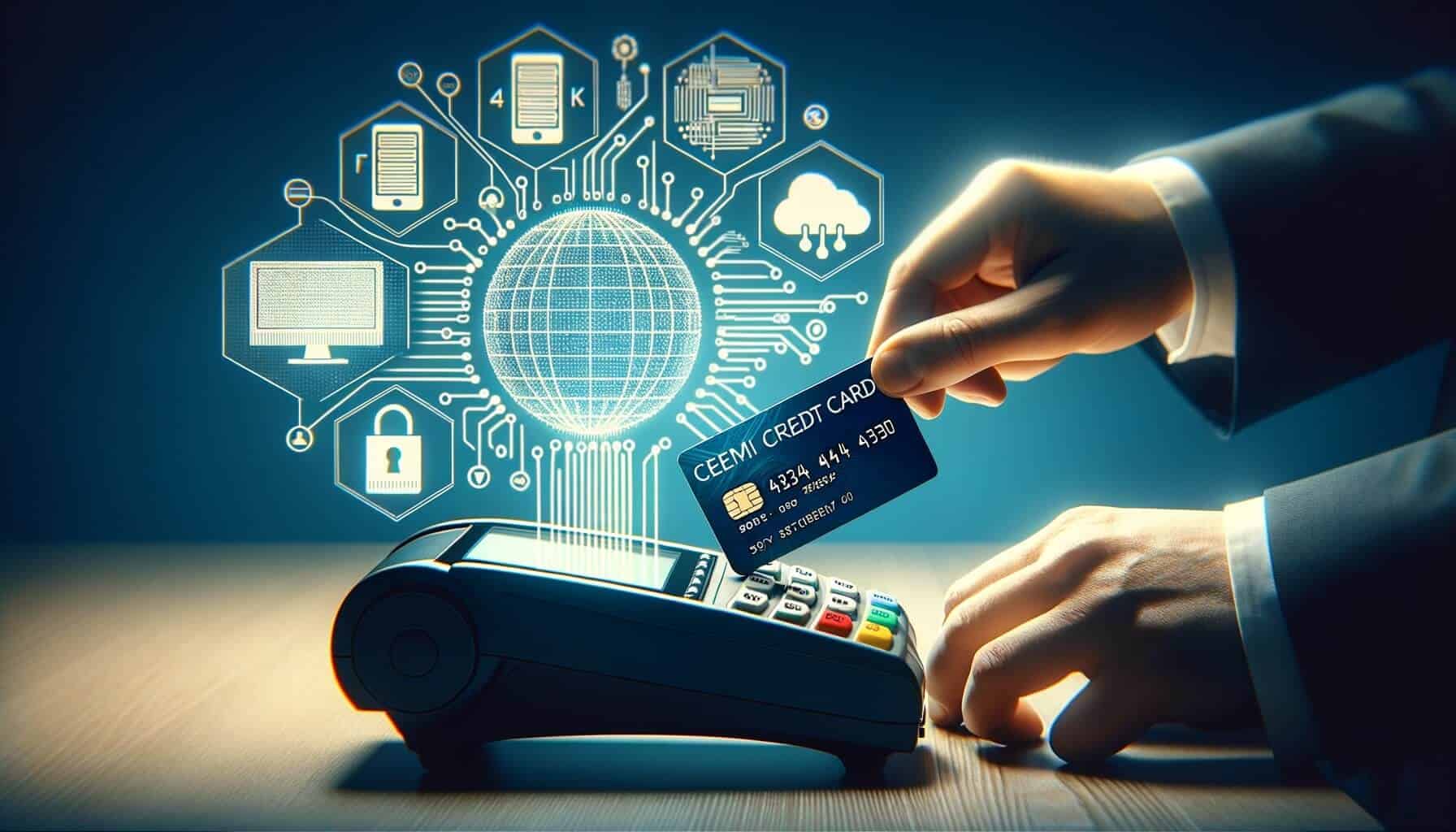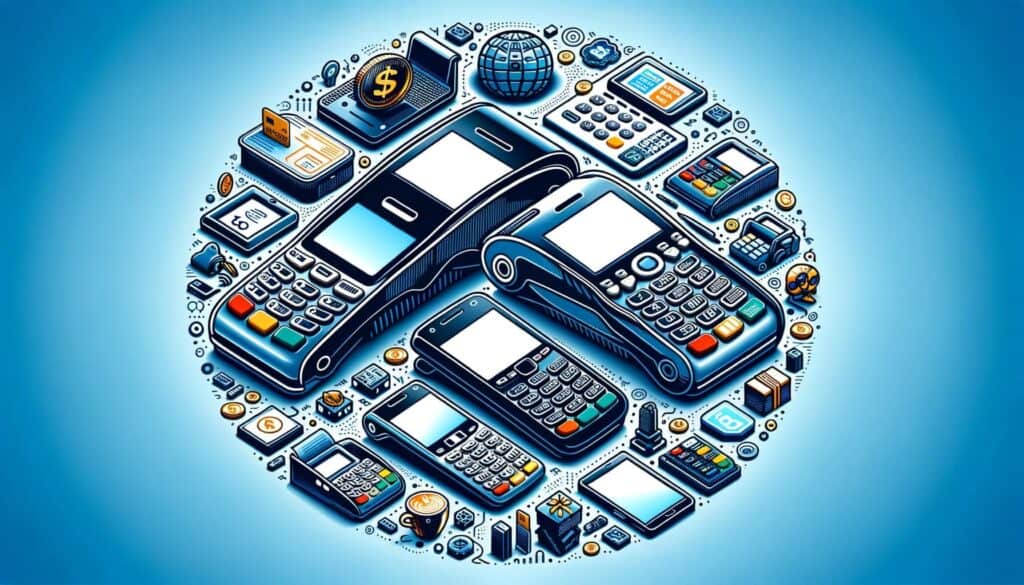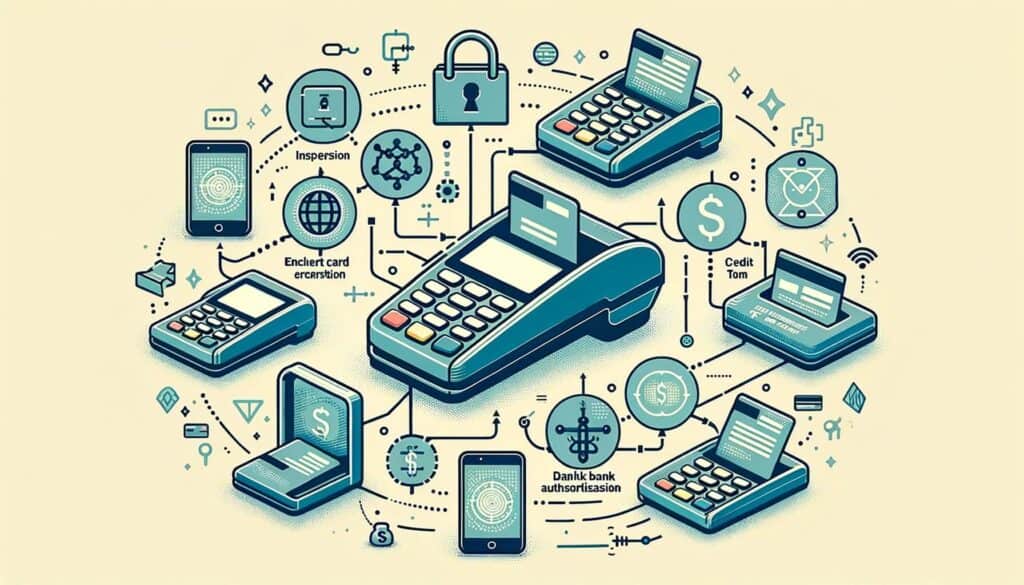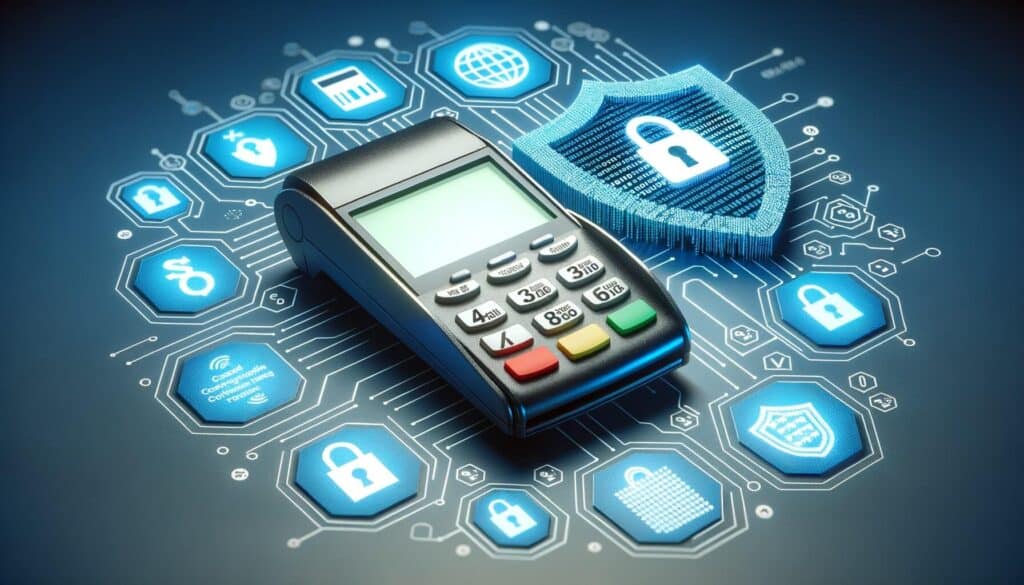
By Harriet Forster March 24, 2025
Credit card terminals are electronic devices used by businesses to process payments made with credit or debit cards. They play a crucial role in modern commerce, allowing customers to conveniently make purchases without the need for cash. In this article, we will explore what credit card terminals are, how they work, and the various types and features available in the market.
Understanding the Components of a Credit Card Terminal
A credit card terminal consists of several components that work together to facilitate the payment process. The main components include a card reader, a keypad, a display screen, and a receipt printer. The card reader is used to read the information stored on the magnetic stripe or chip of the credit or debit card.
The keypad allows customers to enter their PIN or other necessary information, while the display screen provides feedback and prompts during the transaction. The receipt printer generates a printed record of the transaction for the customer.
Types of Credit Card Terminals and Their Features

There are several types of credit card terminals available in the market, each with its own set of features and capabilities. The most common types include countertop terminals, wireless terminals, mobile terminals, and virtual terminals.
Countertop terminals are the traditional credit card terminals that are typically found on store counters. They are connected to a landline or internet connection and offer features such as contactless payment options, EMV chip card acceptance, and NFC (Near Field Communication) capabilities.
Wireless terminals, on the other hand, are portable devices that use wireless networks to process transactions. They are ideal for businesses that require mobility, such as restaurants or delivery services. These terminals often have built-in printers and can connect to the internet via Wi-Fi or cellular networks.
Mobile terminals are similar to wireless terminals but are specifically designed to work with smartphones or tablets. They utilize mobile apps and card readers that can be attached to the mobile device, allowing businesses to accept payments on the go. Mobile terminals are popular among small businesses and independent contractors.
Virtual terminals are software-based solutions that allow businesses to process credit card payments using a computer or laptop. They are typically used for online or phone-based transactions, where the customer’s card information is manually entered into the system. Virtual terminals are convenient for businesses that operate primarily online or over the phone.
How Credit Card Terminals Process Transactions

When a customer makes a payment using a credit card terminal, several steps are involved in processing the transaction. First, the customer inserts or swipes their card, or in the case of contactless payments, taps their card or mobile device on the terminal. The terminal then reads the card information, including the cardholder’s name, card number, and expiration date.
Next, the terminal encrypts the card information to ensure its security during transmission. Encryption is a process that converts the card data into a coded format, making it unreadable to unauthorized parties. This step is crucial in protecting sensitive customer information and preventing fraud.
The encrypted card data is then sent to the payment gateway, which acts as a bridge between the credit card terminal and the acquiring bank. The payment gateway securely transmits the card information to the acquiring bank for authorization. The acquiring bank checks the cardholder’s account balance and verifies that the transaction is legitimate.
If the transaction is approved, the acquiring bank sends an authorization code back to the credit card terminal via the payment gateway. The terminal then displays the approval message on the screen and prompts the customer to enter their PIN if required. Once the PIN is entered, the terminal completes the transaction and prints a receipt for the customer.
The Role of Payment Gateways in Credit Card Terminal Operations

Payment gateways play a crucial role in credit card terminal operations. They act as a secure bridge between the credit card terminal and the acquiring bank, facilitating the transmission of encrypted card data for authorization. Payment gateways also provide additional features such as fraud detection, reporting, and integration with other business systems.
When a customer makes a payment using a credit card terminal, the terminal sends the encrypted card data to the payment gateway. The payment gateway then forwards the data to the acquiring bank for authorization. Once the transaction is approved or declined, the acquiring bank sends the response back to the payment gateway, which in turn relays the response to the credit card terminal.
Payment gateways use various security measures to protect the card data during transmission. They often employ encryption and tokenization techniques to ensure that the data is securely transmitted and stored. Encryption converts the card data into a coded format, while tokenization replaces the card data with a unique identifier called a token. These measures help prevent unauthorized access to sensitive customer information.
Security Measures and Encryption in Credit Card Terminals

Security is a critical aspect of credit card terminals, as they handle sensitive customer information during payment transactions. To ensure the security of card data, credit card terminals employ various security measures, including encryption, tokenization, and PCI DSS compliance.
Encryption is a process that converts the card data into a coded format, making it unreadable to unauthorized parties. When a customer inserts or swipes their card, the terminal immediately encrypts the card data before transmitting it to the payment gateway. This ensures that even if the data is intercepted during transmission, it cannot be deciphered without the encryption key.
Tokenization is another security measure used in credit card terminals. It involves replacing the card data with a unique identifier called a token. The token is then used to represent the card data in subsequent transactions, reducing the risk of exposing sensitive information. If a token is intercepted, it is useless without the corresponding encryption key.
In addition to encryption and tokenization, credit card terminals must comply with the Payment Card Industry Data Security Standard (PCI DSS). PCI DSS is a set of security standards established by the major card brands to protect cardholder data. Compliance with PCI DSS ensures that credit card terminals meet the necessary security requirements and undergo regular security audits.
Troubleshooting Common Issues with Credit Card Terminals
While credit card terminals are generally reliable, they can occasionally encounter issues that may disrupt the payment process. Some common issues include connectivity problems, card reading errors, and software glitches. Here are some troubleshooting steps for common credit card terminal issues:
1. Connectivity Problems: If the terminal is not connecting to the internet or the payment gateway, check the network cables or Wi-Fi connection. Ensure that the internet connection is stable and that the terminal is properly configured to connect to the network.
2. Card Reading Errors: If the terminal is having trouble reading cards, check for any dirt or debris on the card reader. Clean the reader with a soft cloth or compressed air to remove any obstructions. If the problem persists, the terminal may need to be serviced or replaced.
3. Software Glitches: If the terminal freezes or displays error messages, try restarting the device. If the issue persists, check for any software updates or contact the terminal provider for assistance. It may be necessary to reinstall or update the terminal’s software.
Advantages and Disadvantages of Using Credit Card Terminals
Using credit card terminals offers several advantages for businesses, but there are also some disadvantages to consider. Let’s explore both sides:
Advantages:
1. Increased Sales: Accepting credit and debit cards allows businesses to cater to a wider customer base, as many consumers prefer the convenience of card payments over cash.
2. Faster Transactions: Credit card terminals enable quick and efficient payment processing, reducing waiting times for customers and improving overall customer satisfaction.
3. Improved Security: Credit card terminals employ encryption and other security measures to protect sensitive customer information, reducing the risk of fraud and data breaches.
4. Detailed Reporting: Many credit card terminals provide reporting features that allow businesses to track sales, analyze trends, and make informed business decisions.
Disadvantages:
1. Costs: Credit card terminals often come with upfront costs, including the purchase or rental of the terminal itself, as well as ongoing fees for processing transactions and maintaining the terminal.
2. Dependency on Technology: Credit card terminals rely on stable internet connections and functioning hardware and software. Any technical issues or outages can disrupt the payment process and potentially result in lost sales.
3. Chargebacks: In some cases, customers may dispute a transaction and request a chargeback, which can result in additional costs and administrative work for businesses.
4. Security Risks: While credit card terminals employ security measures, they are not immune to hacking or data breaches. Businesses must remain vigilant and ensure they are following best practices to protect customer data.
Frequently Asked Questions about Credit Card Terminals
Q1: Can I use any credit card terminal with my business?
A1: Not all credit card terminals are compatible with every business. Consider factors such as your business type, transaction volume, and connectivity options when choosing a credit card terminal.
Q2: Do I need a separate merchant account to use a credit card terminal?
A2: Yes, you will need a merchant account to accept credit card payments. A merchant account is a type of bank account that allows businesses to accept and process card payments.
Q3: Can I accept contactless payments with a credit card terminal?
A3: Many credit card terminals support contactless payments, such as those made with NFC-enabled cards or mobile wallets like Apple Pay or Google Pay.
Q4: How long does it take for a credit card transaction to be processed?
A4: Credit card transactions are typically processed within a few seconds. However, the time may vary depending on factors such as network connectivity and the speed of the payment gateway.
Q5: Can I accept international credit cards with a credit card terminal?
A5: Most credit card terminals support international credit cards, but it is important to check with your payment processor or terminal provider to ensure compatibility.
Conclusion
Credit card terminals are essential tools for businesses to accept credit and debit card payments. They come in various types and offer different features to cater to the diverse needs of businesses.
Understanding how credit card terminals work, including their components, transaction processing, and security measures, is crucial for businesses to ensure smooth and secure payment operations.
By choosing the right credit card terminal and following best practices, businesses can provide a seamless payment experience for their customers while safeguarding sensitive cardholder data.